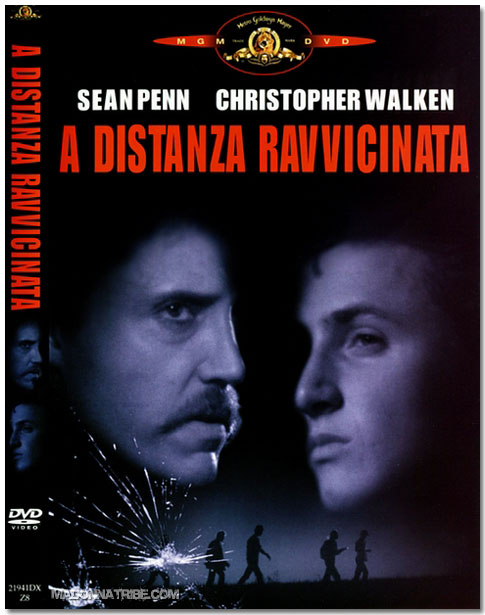Hope I Live To Tell
In a recent interview to Filmfreakcentral, James Foley, director of three Madonna videos (Live To Tell, Papa don’t Preach and True Blue) takes a look back to talk about his two movies At Close Range and Who’s That Girl and about his friendship with actor Sean Penn that got him involved as director of the “third Madonna Movie”
Foley: There was a Sean Penn retrospective and At Close Range was there and Sean asked me to come and I watched the movie. I hadn’t seen it in a long time and I was kind of amazed myself, not at my own brilliance (laughs), but how did that happen. I remember being absolutely fearless because I was too young to know any better. I had no idea, I had never tasted failure, or pressure from the studio. You know, that film got made because Sean was very hot, Sean wanted me to direct it, and because he and I were so simpatico, we could do whatever we wanted because we held the power. I never appreciated that at the time, how important that was, so we literally did whatever we wanted and tried crazy things and didn’t care what other people thought, we didn’t have to care what other people thought. It just seemed like the performances seemed like a natural extension of a conversation that Sean and I had going, we’d become good friends a couple of years before that, and I just took that nurturing and freedom really for granted.

Chistopher Walken came into the situation and instinctually or luckily, I reacted to him in the right way. There was never a film class about directing actors, so I would just act like an audience member and say that I didn’t like this or didn’t like that and I learned right away that some actors you talk to and explain things, and others you say as little as possible and Walken was one who you said as little as possible. I have to say that I really just fell into it without thinking about it, so much of my early stuff I did without thinking about it, it was more “what looks cool” and “what’s a good moment.” We had no idea if it was going to be pleasing to an audience or whether it was going to be commercial or if the ending was too downbeat, we didn’t care.
The only time we had a problem was with a financier who after we had finished, and who has since gone bankrupt, asked us to change the ending. If you remember the ending, Sean has the gun to Chris Walken‘s head and pulls back and says, “No, no, I’m not you“, and that’s the whole point of the friggin’ movie, but there was this pressure of “reshoot the ending and have Sean pull the trigger.” Kill Walken! That’s what came out of the test screening, the audience wanted Sean to have revenge, but luckily I was connected to Sean and Sean said, “I ain’t shootin’ that,” and that was the end of it. So that’s what I learned in retrospect about why that movie was as good as it was.
Q: Did your friendship with Penn lead you to your next film, Who’s That Girl? [starring Penn’s then-wife Madonna]?
Foley: Mmm, exactly. Friendships have their good side and their bad side.

You mentioned that to a point, you hadn’t experienced failure, what was it like to experience it for the first time with the full force of popular and critical opinion?
Foley: It was a major life experience. Now that the years have passed, the pain has gone away, replaced by a kind of pride in learning something early that has maybe sustained me for this long. I really believe, I’m interested in studying the history of directors, and why they make a few good films and then fall off the map, you look to the credits of episodic TV and there they are, and I think that it has so much to do with how you respond to failure. To experience that first failure of your movie is so shocking. For me, my whole life had been moving forward: 1st grade, 2nd grade, 3rd grade, college, grad school, film, and that first failure, suddenly you have a public humiliation. THE NEW YORK TIMES is saying that you’re no good, everyone’s saying you’re no good, VARIETY‘s saying that it’s a bomb, the studio doesn’t like you anymore, nobody knows you, and you get thrown back and it’s painful as hell. I feel like I was very lucky in that the next thing I did was very low budget, but it was something I really believed in.
Q: After Dark, My Sweet?
Foley: Exactly. In the beginning I didn’t know what it was that I did, what I did in film best, and after Who’s That Girl? I looked back and tried to understand what is it that I responded to and make the decision to do only what I responded to viscerally. Luckily After Dark got some good critical attention and, luckily again, Al Pacino had seen At Close Range and After Dark, My Sweet and really wanted to do something with me and came to me with Mamet’s Glengarry Glen Ross. Once that happened, I’d become established again, gotten the approval again of people who mattered more than me at that point. Most important in that calculus of Hollywood is that I could work with stars. It’s one of the most cynical things about the studios, you know, that they don’t really care about anything so much as you being able to work under budget and keep the “talent” happy.
Source: Filmfreakcentral
